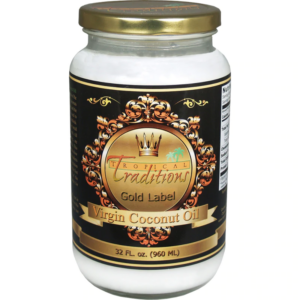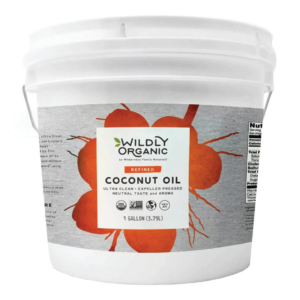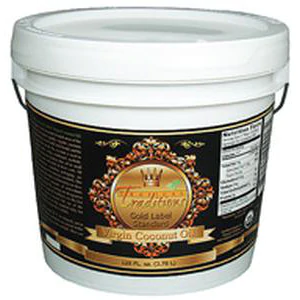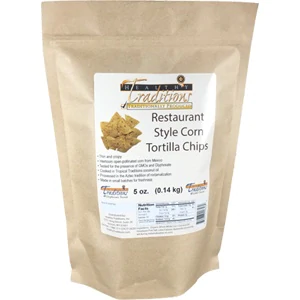Below is a Ray Peat Newsletter in its entirety on Coconut Oil.
All discussions above Peat’s are based on my own opinions and interpretations and what I have found useful for my own use as well as from feedback from many, many, many, many others.
Here is the link for more information about real food.
I like to eat a couple of tablespoons a day of plain coconut oil, just off the spoon.
SEE BELOW for MORE INFO ABOUT USING REAL COCONUT OIL or NOT FOR WEIGHT LOSS.
MCT oil is NOT coconut oil!! MCT OIL IS DANGEROUS and there is now evidence it can cause liver damage, fatty liver.
The first time, in the 1990s, that I tried a spoonful of it, I smelled like a goat for about three days; the 6, 8, and 10 carbon chains are characteristic of goat odor. Later, around 2010, I tried it again, and I didn’t notice much goat smell on my skin, but it was very disturbing to my intestine, so I tried to figure out what happens to it in the intestine. Some people seem to tolerate it, but others get diarrhea or other symptoms. I think its main way of disturbing digestion is that it blocks chylomicron formation, and chylomicrons are how we normally absorb fats and the oily vitamins. Chylomicrons circulate in the blood, bypassing the liver for several cycles. The undigested fats and vitamins that didn’t form chylomicrons will mainly pass out of the body harmlessly, but those that are absorbed will mostly go into the portal vein, where they are immediately processed by the liver.
Highly unsaturated fatty acids are toxic to the liver, so saturated fatty acids can improve liver health by blocking the oxidative damage from PUFA, but a large amount of MCT, reaching the liver directly via the portal vein, is likely to cause fatty liver. – Ray PeatReference given by Ray Peat:
Arch Dis Child. 1988 Jul; 63(7): 840–842.
Fatty liver and medium chain triglyceride (MCT) diet.
D Beverley and R Arthur
A 12 year old boy with intractable epilepsy developed fatty infiltration of the liver after three years’ treatment on the medium chain triglyceride (MCT) diet. This was not associated with any hepatic dysfunction and resolved after discontinuing the diet. Three of four other patients on the same diet had evidence of hepatic steatosis.
I was emailed the above when I had earlier asked Peat about MCT oil because I too experienced intestinal disturbance when I would consume it.
I was alarmed at how much it was appearing in the shops, food ads, in the dangerous Keto everything everywhere. And now, even the small amount I might use as part of a highly recommended Vitamin K preparation is off-putting to me.
People are eating mega grams of MCT oil and many ounces of it per day by following the fraudulent, corrupted science Keto diet.
People are eating even more of it because of all the supplements now made with it because it remains liquid, emulsifies ingredients and is tasteless.
DO NOT make your cannabis medicines with it (I make my cannabis medicine only with high quality coconut oil).
Avoid MCT oils whenever possible.
See Peat’s newsletter below in its entirety for more info about the benefits of full, natural coconut oil.
Eating coconut oil just off the spoon every day can help heal and eliminate more of the toxic PUFA in your body.
PUFA (poly unsaturated fatty acids including hemp seed oil and black seed oil—no matter how organic, and the highly toxic omega-6 linoleic acid in safflower oils and other seed and vegetable oils) builds up from eating seed oils, vegetable oils (and including avocado oil, one of the most toxic, poisonous oils you can eat), hemp oil (NOT a good source of cannabinoids), fatty fowl (chicken, duck), fatty fish (salmon).
It can take 4-7 years to fully remove these bad oils from the body once a person completely stops eating any of them. These PUFAs can wreck havoc on pain levels and auto immune symptoms of all kinds. The PUFAs build up in different tissues causing age spots, possible back of eye deposits like “drusen”, possible cataract formations and macular degeneration and problems with several of the body systems. Eating naturally made coconut oil can help as long as the PUFA consumption ends.
Keep in mind that saturated fats, including coconut oil, do also contain a small amount of PUFA. So eating only saturated fats and in great quantity (like recommended in the Keto diet) can still cause an excess of PUFA build up in the body.
Included under the Dangerous Items section, is Peat’s article about the dangers of these other unsaturated oils.
BRANDS:
In my notes, Peat always used to recommend the coconut oil to be a “76 degree melt/filtered” type.
It could be the “cheap stuff” because he said the label of “organic” doesn’t matter because coconuts are grown without pesticide use anyway.
We can also use it sparingly on the skin as a sun protectant (not a sunscreen, but it can aid in reducing free radicals forming from sun contact) and a skin nourisher.
Also, we can melt a tiny amount between the palms and rub into towel dried clean damp hair.
But some, often many these days, brands and types of coconut oil might be contaminated with processing solvents, or be missing some of the key ingredients, even if the container says “Organic”. Unfortunately, this is another fraudulent industry. Most brands are labeling their product fraudulently.
Today, most coconut oil sellers do not label anything referring to “76 degree melt” as it’s understood to be that anyway.
They also rarely talk about their process, whether enzymes are used or not, or any chemical extraction process.
Sometimes they will mention the oil is deodorized and refined.
They usually only label their oils as expeller pressed, cold pressed, or take terms from the olive oil industry about virgin oils which might not really fit how coconut oil is created.
And they might label an oil as refined or not, or if it has a coconut taste or not and mention heat points if used in cooking.
So, when looking for quality oil, try to find one that has not used chemicals or enzymes in the extraction or bottling processes. Ask them, email them if a product is refined or just filtered. Look into the seller to consider if they could be trustworthy. Many of the large brands I tend to stay away as there is rarely a way to look for accountability within the layers of Big Food.
For a trusted supplier of coconut oil, Peat originally, and for years, recommended Wilderness Naturals for their standard $30-gallon-pail 76 degree melt version. I bought and used their gallon version for years.
I don’t currently recommend them. I think the type entry level coconut oil they now offer is manufactured differently than just the filtered, deodorized 76 degree melt they used to sell.
I’ll put links to them and people can decide for themselves.
The company has evolved and the name is now Wildly Organic. Their website includes valuable information.
Their current gallon version of inexpensive oil they say is expeller pressed and refined. I’ve used it for some of my cannabis medicines recently.
However, this product does not seem suitable to eat off the spoon. It has sometimes turned rancid in less time than it should. It has no scent.
Be aware that many “cold pressed” or marketed “coco-crème” coconut oils could have been made with enzymes. If made with enzymes, do not consume. The enzymes could be irritating to the intestines.
Always do your homework to see if another company might provide a higher quality product as these small, family owned companies from 2-3 decades ago change their products and handling and testings, and change hands.
See my next recommendation.
My FAVORITE coconut oil to just eat off the spoon, (and to make even higher quality medicines) is the premium Gold Label Virgin coconut oil from a company that is so strict in product testing, that every food they sell has also been tested for glyphosate. Their website is also loaded with more info about coconuts and coconut oil.
I think this brand of coconut oil, because it’s NATURAL and NOT refined (like Wildly Organics) makes a better “off the spoon” coconut oil.
Peat talks about his weight loss in his article below. Some people have reported weight GAIN eating REFINED coconut oil (like from Wildly Organic) and not experienced the weight LOSS they could by instead eating NATURAL, (no enzyme) cleanly made coconut oil.
(This discussion of weight gain or loss should not affect your use of your coconut oil cannabis medicine, which is a considerably smaller amount than people using it as a supplement on its own).
IF YOU WANT TO EXPERIMENT using it for weight loss or weight stabilization, GO SLOW. Monitor yourself closely for weight shifts.
I suggest first buying a small amount of the coconut oil you think you want to use for this. Eat about 2 TBLE per day of it FOR A WEEK ONLY.
After a week check if you have gained or lost weight. If all is still the same, try the same for a 2nd week and check your weight.
If you are gaining weight and were expecting to lose weight instead, STOP taking the coconut oil.
The problem could be the type and brand of coconut oil you are using or it could be your unique metabolism.
If you are using My Favorite Brand already and have experienced this paradoxical effect of weight gain instead of loss, do not eat it as an additional food. You can try again in the future.
If you are using a different brand or type coconut oil, switch to a small jar of my brand to try your experiment again.
HACK: If you decide to buy coconut oil by the gallon pail, you will want to purchase this special pry-the-bucket-open tool. Otherwise, getting the lid off is a completely useless endeavor!
And by the way, (if your weight can tolerate snacks at all, I highly suggest you try the coconut oil experiment with yourself first before engaging in snack foods) I highly recommend this same company’s (full product tested for glyphosate and free of other toxins) coconut oil and nixtamalated corn tortilla chips snacks!

A R T I C L E
Coconut Oil
I have already discussed the many toxic effects of the unsaturated oils, and I have frequently mentioned that coconut oil doesn’t have those toxic effects, though it does contain a small amount of the unsaturated oils. Many people have asked me to write something on coconut oil. I thought I might write a small book on it, but I realize that there are no suitable channels for distributing such a book–if the seed-oil industry can eliminate major corporate food products that have used coconut oil for a hundred years, they certainly have the power to prevent dealers from selling a book that would affect their market more seriously. For the present, I will just outline some of the virtues of coconut oil.
The unsaturated oils in some cooked foods become rancid in just a few hours, even at refrigerator temperatures, and are responsible for the stale taste of left-over foods. (Eating slightly stale food isn’t particularly harmful, since the same oils, even when eaten absolutely fresh, will oxidize at a much higher rate once they are in the body, where they are heated and thoroughly mixed with an abundance of oxygen.) Coconut oil that has been kept at room temperature for a year has been tested for rancidity, and showed no evidence of it. Since we would expect the small percentage of unsaturated oils naturally contained in coconut oil to become rancid, it seems that the other (saturated) oils have an antioxidative effect: I suspect that the dilution keeps the unstable unsaturated fat molecules spatially separated from each other, so they can’t interact in the destructive chain reactions that occur in other oils. To interrupt chain-reactions of oxidation is one of the functions of antioxidants, and it is possible that a sufficient quantity of coconut oil in the body has this function. It is well established that dietary coconut oil reduces our need for vitamin E, but I think its antioxidant role is more general than that, and that it has both direct and indirect antioxidant activities.
Coconut oil is unusually rich in short and medium chain fatty acids. Shorter chain length allows fatty acids to be metabolized without use of the carnitine transport system. Mildronate, which I discussed in an article on adaptogens, protects cells against stress partly by opposing the action of carnitine, and comparative studies showed that added carnitine had the opposite effect, promoting the oxidation of unsaturated fats during stress, and increasing oxidative damage to cells. I suspect that a degree of saturation of the oxidative apparatus by short-chain fatty acids has a similar effect–that is, that these very soluble and mobile short-chain saturated fats have priority for oxidation, because they don’t require carnitine transport into the mitochondrion, and that this will tend to inhibit oxidation of the unstable, peroxidizable unsaturated fatty acids.
When Albert Schweitzer operated his clinic in tropical Africa, he said it was many years before he saw any cases of cancer, and he believed that the appearance of cancer was caused by the change to the European type of diet. In the l920s, German researchers showed that mice on a fat-free diet were practically free of cancer. Since then, many studies have demonstrated a very close association between consumption of unsaturated oils and the incidence of cancer.
Heart damage is easily produced in animals by feeding them linoleic acid; this “essential” fatty acid turned out to be the heart toxin in rape-seed oil. The addition of saturated fat to the experimental heart-toxic oil-rich diet protects against the damage to heart cells.
Immunosuppression was observed in patients who were being “nourished” by intravenous emulsions of “essential fatty acids,” and as a result coconut oil is used as the basis for intravenous fat feeding, except in organ-transplant patients. For those patients, emulsions of unsaturated oils are used specifically for their immunosuppressive effects.
General aging, and especially aging of the brain, is increasingly seen as being closely associated with lipid peroxidation.
Several years ago I met an old couple, who were only a few years apart in age, but the wife looked many years younger than her doddering old husband. She was from the Philippines, and she remarked that she always had to cook two meals at the same time, because her husband couldn’t adapt to her traditional food. Three times every day, she still prepared her food in coconut oil. Her apparent youth increased my interest in the effects of coconut oil.
In the l960s, Hartroft and Porta gave an elegant argument for decreasing the ratio of unsaturated oil to saturated oil in the diet (and thus in the tissues). They showed that the “age pigment” is produced in proportion to the ratio of oxidants to antioxidants, multiplied by the ratio of unsaturated oils to saturated oils. More recently, a variety of studies have demonstrated that ultraviolet light induces peroxidation in unsaturated fats, but not saturated fats, and that this occurs in the skin as well as in vitro. Rabbit experiments, and studies of humans, showed that the amount of unsaturated oil in the diet strongly affects the rate at which aged, wrinkled skin develops. The unsaturated fat in the skin is a major target for the aging and carcinogenic effects of ultraviolet light, though not necessarily the only one.
In the l940s, farmers attempted to use cheap coconut oil for fattening their animals, but they found that it made them lean, active and hungry. For a few years, an antithyroid drug was found to make the livestock get fat while eating less food, but then it was found to be a strong carcinogen, and it also probably produced hypothyroidism in the people who ate the meat. By the late l940s, it was found that the same antithyroid effect, causing animals to get fat without eating much food, could be achieved by using soy beans and corn as feed.
Later, an animal experiment fed diets that were low or high in total fat, and in different groups the fat was provided by pure coconut oil, or a pure unsaturated oil, or by various mixtures of the two oils. At the end of their lives, the animals’ obesity increased directly in proportion to the ratio of unsaturated oil to coconut oil in their diet, and was not related to the total amount of fat they had consumed. That is, animals which ate just a little pure unsaturated oil were fat, and animals which ate a lot of coconut oil were lean.
In the l930s, animals on a diet lacking the unsaturated fatty acids were found to be “hypermetabolic.” Eating a “normal” diet, these animals were malnourished, and their skin condition was said to be caused by a “deficiency of essential fatty acids.” But other researchers who were studying vitamin B6 recognized the condition as a deficiency of that vitamin. They were able to cause the condition by feeding a fat-free diet, and to cure the condition by feeding a single B vitamin. The hypermetabolic animals simply needed a better diet than the “normal,” fat-fed, cancer-prone animals did.
G. W. Crile and his wife found that the metabolic rate of people in Yucatan, where coconut is a staple food, averaged 25% higher than that of people in the United States. In a hot climate, the adaptive tendency is to have a lower metabolic rate, so it is clear that some factor is more than offsetting this expected effect of high environmental temperatures. The people there are lean, and recently it has been observed that the women there have none of the symptoms we commonly associate with the menopause.
By l950, then, it was established that unsaturated fats suppress the metabolic rate, apparently creating hypothyroidism. Over the next few decades, the exact mechanisms of that metabolic damage were studied. Unsaturated fats damage the mitochondria, partly by suppressing the repiratory enzyme, and partly by causing generalized oxidative damage. The more unsaturated the oils are, the more specifically they suppress tissue response to thyroid hormone, and transport of the hormone on the thyroid transport protein.
Plants evolved a variety of toxins designed to protect themselves from “predators,” such as grazing animals. Seeds contain a variety of toxins, that seem to be specific for mammalian enzymes, and the seed oils themselves function to block proteolytic digestive enzymes in the stomach. The thyroid hormone is formed in the gland by the action of a proteolytic enzyme, and the unsaturated oils also inhibit that enzyme. Similar proteolytic enzymes involved in clot removal and phagocytosis appear to be similarly inhibited by these oils.
Just as metabolism is “activated” by consumption of coconut oil, which prevents the inhibiting effect of unsaturated oils, other inhibited processes, such as clot removal and phagocytosis, will probably tend to be restored by continuing use of coconut oil.
Brain tissue is very rich in complex forms of fats. The experiment (around 1978) in which pregnant mice were given diets containing either coconut oil or unsaturated oil showed that brain development was superior in the young mice whose mothers ate coconut oil. Because coconut oil supports thyroid function, and thyroid governs brain development, including myelination, the result might simply reflect the difference between normal and hypothyroid individuals. However, in 1980, experimenters demonstrated that young rats fed milk containing soy oil incorporated the oil directly into their brain cells, and had structurally abnormal brain cells as a result.
Lipid peroxidation occurs during seizures, and antioxidants such as vitamin E have some anti-seizure activity. Currently, lipid peroxidation is being found to be involved in the nerve cell degeneration of Alzheimer’s disease.
Various fractions of coconut oil are coming into use as “drugs,” meaning that they are advertised as treatments for diseases. Butyric acid is used to treat cancer, lauric and myristic acids to treat virus infections, and mixtures of medium-chain fats are sold for weight loss. Purification undoubtedly increases certain effects, and results in profitable products, but in the absence of more precise knowledge, I think the whole natural product, used as a regular food, is the best way to protect health. The shorter-chain fatty acids have strong, unpleasant odors; for a couple of days after I ate a small amount of a medium-chain triglyceride mixture, my skin oil emitted a rank, goaty smell. Some people don’t seem to have that reaction, and the benefits might outweigh the stink, but these things just haven’t been in use long enough to know whether they are safe.
We have to remember that the arguments made for aspartame, monosodium glutamate, aspartic acid, and tryptophan–that they are like the amino acids that make up natural proteins–are dangerously false. In the case of amino acids, balance is everything. Aspartic and glutamic acids promote seizures and cause brain damage, and are intimately involved in the process of stress-induced brain aging, and tryptophan by itself is carcinogenic. Treating any complex natural product as the drug industry does, as a raw material to be fractionated in the search for “drug” products, is risky, because the relevant knowledge isn’t sought in the search for an association between a single chemical and a single disease.
While the toxic unsaturated paint-stock oils, especially safflower, soy, corn and linseed (flaxseed) oils, have been sold to the public precisely for their drug effects, all of their claimed benefits were false. When people become interested in coconut oil as a “health food,” the huge seed-oil industry–operating through their shills–are going to attack it as an “unproved drug.”
While components of coconut oil have been found to have remarkable physiological effects (as antihistamines, antiinfectives/antiseptics, promoters of immunity, glucocorticoid antagonist, nontoxic anticancer agents, for example), I think it is important to avoid making any such claims for the natural coconut oil, because it very easily could be banned from the import market as a “new drug” which isn’t “approved by the FDA.” We have already seen how money and propaganda from the soy oil industry eliminated long-established products from the U.S. market. I saw people lose weight stably when they had the habit of eating large amounts of tortilla chips fried in coconut oil, but those chips disappeared when their producers were pressured into switching to other oils, in spite of the short shelf life that resulted in the need to add large amounts of preservatives. Oreo cookies, Ritz crackers, potato chip producers, and movie theater popcorn makers have experienced similar pressures.
The cholesterol-lowering fiasco for a long time centered on the ability of unsaturated oils to slightly lower serum cholesterol. For years, the mechanism of that action wasn’t known, which should have suggested caution. Now, it seems that the effect is just one more toxic action, in which the liver defensively retains its cholesterol, rather than releasing it into the blood. Large scale human studies have provided overwhelming evidence that whenever drugs, including the unsaturated oils, were used to lower serum cholesterol, mortality increased, from a variety of causes including accidents, but mainly from cancer.
Since the l930s, it has been clearly established that suppression of the thyroid raises serum cholesterol (while increasing mortality from infections, cancer, and heart disease), while restoring the thyroid hormone brings cholesterol down to normal. In this situation, however, thyroid isn’t suppressing the synthesis of cholesterol, but rather is promoting its use to form hormones and bile salts. When the thyroid is functioning properly, the amount of cholesterol in the blood entering the ovary governs the amount of progesterone being produced by the ovary, and the same situation exists in all steroid-forming tissues, such as the adrenal glands and the brain. Progesterone and its precursor, pregnenolone, have a generalized protective function: antioxidant, anti-seizure, antitoxin, anti-spasm, anti-clot, anti-cancer, pro-memory, pro-myelination, pro-attention, etc. Any interference with the formation of cholesterol will interfere with all of these exceedingly important protective functions.
As far as the evidence goes, it suggests that coconut oil, added regularly to a balanced diet, lowers cholesterol to normal by promoting its conversion into pregnenolone. (The coconut family contains steroids that resemble pregnenolone, but these are probably mostly removed when the fresh oil is washed with water to remove the enzymes which would digest the oil.) Coconut-eating cultures in the tropics have consistently lower cholesterol than people in the U.S. Everyone that I know who uses coconut oil regularly happens to have cholesterol levels of about 160, while eating mainly cholesterol rich foods (eggs, milk, cheese, meat, shellfish). I encourage people to eat sweet fruits, rather than starches, if they want to increase their production of cholesterol, since fructose has that effect.
Many people see coconut oil in its hard, white state, and–as a result of their training watching television or going to medical school–associate it with the cholesterol-rich plaques in blood vessels. Those lesions in blood vessels are caused mostly by lipid peroxidation of unsaturated fats, and relate to stress, because adrenaline liberates fats from storage, and the lining of blood vessels is exposed to high concentrations of the blood-borne material. In the body, incidentally, the oil can’t exist as a solid, since it liquefies at 76 degrees. (Incidentally, the viscosity of complex materials isn’t a simple matter of averaging the viscosity of its component materials; cholesterol and saturated fats sometimes lower the viscosity of cell components.)
Most of the images and metaphors relating to coconut oil and cholesterol that circulate in our culture are false and misleading. I offer a counter-image, which is metaphorical, but it is true in that it relates to lipid peroxidation, which is profoundly important in our bodies. After a bottle of safflower oil has been opened a few times, a few drops that get smeared onto the outside of the bottle begin to get very sticky, and hard to wash off. This property is why it is a valued base for paints and varnishes, but this varnish is chemically closely related to the age pigment that forms “liver spots” on the skin, and similar lesions in the brain, heart, blood vessels, lenses of the eyes, etc. The image of “hard, white saturated coconut oil” isn’t relevant to the oil’s biological action, but the image of “sticky varnish-like easily oxidized unsaturated seed oils” is highly relevant to their toxicity.
The ability of some of the medium chain saturated fatty acids to inhibit the liver’s formation of fat very likely synergizes with the pro-thyroid effect, in allowing energy to be used, rather than stored. When fat isn’t formed from carbohydrate, the sugar is available for use, or for storage as glycogen. Therefore, shifting from unsaturated fats in foods to coconut oil involves several anti-stress processes, reducing our need for the adrenal hormones. Decreased blood sugar is a basic signal for the release of adrenal hormones. Unsaturated oil tends to lower the blood sugar in at least three basic ways. It damages mitochondria, causing respiration to be uncoupled from energy production, meaning that fuel is burned without useful effect. It suppresses the activity of the respiratory enzyme (directly, and through its anti-thyroid actions), decreasing the respiratory production of energy. And it tends to direct carbohydrate into fat production, making both stress and obesity more probable. For those of us who use coconut oil consistently, one of the most noticeable changes is the ability to go for several hours without eating, and to feel hungry without having symptoms of hypoglycemia.
One of the stylish ways to promote the use of unsaturated oils is to refer to their presence in “cell membranes,” and to claim that they are essential for maintaining “membrane fluidity.” As I have mentioned above, it is the ability of the unsaturated fats, and their breakdown products, to interfere with enzymes and transport proteins, which accounts for many of their toxic effects, so they definitely don’t just harmlessly form “membranes.” They probably bind to all proteins, and disrupt some of them, but for some reason their affinity for proteolytic and respiration-related enzymes is particularly obvious. (I think the chemistry of this association is going to give us some important insights into the nature of organisms.
Metchnikof’s model that I have discussed elsewhere might give us a picture of how those factors relate in growth, physiology, and aging.) Unsaturated fats are slightly more water-soluble than fully saturated fats, and so they do have a greater tendency to concentrate at interfaces between water and fats or proteins, but there are relatively few places where these interfaces can be usefully and harmlessly occupied by unsaturated fats, and at a certain point, an excess becomes harmful. We don’t want “membranes” forming where there shouldn’t be membranes. The fluidity or viscosity of cell surfaces is an extremely complex subject, and the degree of viscosity has to be appropriate for the function of the cell. Interestingly, in some cells, such as the cells that line the air sacs of the lungs, cholesterol and one of the saturated fatty acids found in coconut oil can increase the fluidity of the cell surface.
In many cases, stressful conditions create structural disorder in cells. These influences have been called “chaotropic,” or chaos-producing. In red blood cells, which have sometimes been wrongly described as “hemoglobin enclosed in a cell membrane,” it has been known for a long time that lipid peroxidation of unsaturated fats weakens the cellular structure, causing the cells to be destroyed prematurely. Lipid peroxidation products are known to be “chaotropic,” lowering the rigidity of regions of cells considered to be membranes. But the red blood cell is actually more like a sponge in structure, consisting of a “skeleton” of proteins, which (if not damaged by oxidation) can hold its shape, even when the hemoglobin has been removed. Oxidants damage the protein structure, and it is this structural damage which in turn increases the “fluidity” of the associated fats.
So, it is probably true that in many cases the liquid unsaturated oils do increase “membrane fluidity,” but it is now clear that in at least some of those cases the “fluidity” corresponds to the chaos of a damaged cell protein structure. (N. V. Gorbunov, “Effect of structural modification of membrane proteins on lipid-protein interactions in the human erythrocyte membrane,” Bull. Exp. Biol. & Med. 116(11), 1364-67. 1993.
Although I had stopped using the unsaturated seed oils years ago, and supposed that I wasn’t heavily saturated with toxic unsaturated fat, when I first used coconut oil I saw an immediate response, that convinced me my metabolism was chronically inhibited by something that was easily alleviated by “dilution” or molecular competition. I had put a tablespoonful of coconut oil on some rice I had for supper, and half an hour later while I was reading, I noticed I was breathing more deeply than normal. I saw that my skin was pink, and I found that my pulse was faster than normal–about 98, I think. After an hour or two, my pulse and breathing returned to normal. Every day for a couple of weeks I noticed the same response while I was digesting a small amount of coconut oil, but gradually it didn’t happen any more, and I increased my daily consumption of the oil to about an ounce. I kept eating the same foods as before (including a quart of ice cream every day), except that I added about 200 or 250 calories per day as coconut oil. Apparently the metabolic surges that happened at first were an indication that my body was compensating for an anti-thyroid substance by producing more thyroid hormone; when the coconut oil relieved the inhibition, I experienced a moment of slight hyperthyroidism, but after a time the inhibitor became less effective, and my body adjusted by producing slightly less thyroid hormone. But over the next few months, I saw that my weight was slowly and consistently decreasing. It had been steady at 185 pounds for 25 years, but over a period of six months it dropped to about 175 pounds. I found that eating more coconut oil lowered my weight another few pounds, and eating less caused it to increase.
The anti-obesity effect of coconut oil is clear in all of the animal studies, and in my friends who eat it regularly. It is now hard to get it in health food stores, since Hain stopped selling it. The Spectrum product looks and feels a little different to me, and I suppose the particular type of tree, region, and method of preparation can account for variations in the consistency and composition of the product. The unmodified natural oil is called “76 degree melt,” since that is its natural melting temperature. One bottle from a health food store was labeled “natural coconut oil, 92% unsaturated oil,” and it had the greasy consistency of old lard. I suspect that someone had confused palm oil (or something worse) with coconut oil, because it should be about 96% saturated fatty acids.
© Ray Peat 2006. All Rights Reserved. www.RayPeat.com








